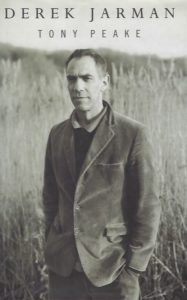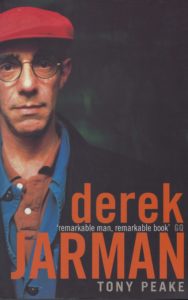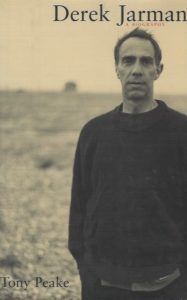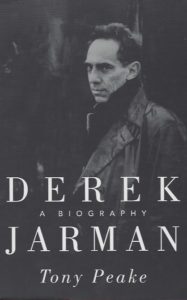| Outstanding… the thoroughgoing life story that the British experimental director and gay crusader deserved. Nigel Andrews, Financial Times The best kind of biographical writing – simple and transparent – so you see through to the life. James Hopkin, Independent on Sunday Every great life is made greater by a great life, and Peake has given Derek Jarman the biography he deserves. Simon Edge, Gay Times | |
When Derek Jarman died of AIDS-related causes in February 1994, his death was widely reported in the national press. Seven years previously, when he first learned he was HIV-positive, his name was known almost exclusively to dedicated filmgoers and cognoscenti of the artistic avant garde. Between diagnosis and death, Jarman produced no fewer than five feature films and as many books, painted furiously, made pop videos, created a singular garden in the shingle surrounding his simple fisherman’s cottage at Dungeness in Kent and became an impassioned and provocative spokesperson not only for gay men everywhere, but for anyone oppressed by reaction and bigotry. Jarman’s story stretches from the bleakness of post-war Britain and his peripatetic RAF childhood to studenthood at the Slade and work as a designer for such figures as Frederick Ashton, John Gielgud and Ken Russell. It tells how energetic home movie-making with dazzling friends and a hand-held camera led to distinctive features like Sebastiane, Jubilee, The Tempest, Caravaggio and Blue. It is the tale of a painter and a gardener, of a vivid bohemian existence in the warehouse studios that once lined the Thames, laughter and anecdote, wild parties and wilder sex. It is also the story of sexual fear and repression, the devastation of a disease, inimitable courage and grace in the face of protracted and painful death, and a love as singular as any of the films or the garden which Jarman has left as one of his many legacies. Tony Peake knew Derek Jarman during the last seven years of Jarman’s life. In researching this biography, he has received unprecedented co-operation from Jarman’s family and friends and been given unfettered access to Jarman’s papers and film archives. | |
Hardback: Little, Brown, London, 1999. 613pp. ISBN 0-316-64466-8 Hardback: Overlook Press, New York, 2000. 613pp. ISBN 1-58567-066-9 Paperback: Abacus, London, 2001. 613pp. ISBN 0-349-11243-6 Paperback: University of Minnesota Press, 2011. 613 pp. ISBN 978-0-8166-7432-9 |



